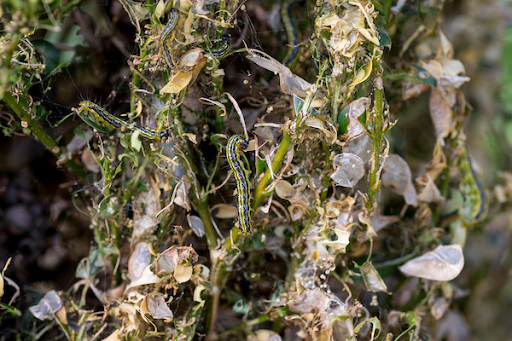Introducing our Boxwood Moth Control Program

We’re excited to announce our new box tree moth control program for boxwoods, offering the first affordable preventative program for this common pest in Toronto.
The most common (and most destructive) of these pests is the box tree moth, which is active from early May to mid-September, and capable of completely defoliating hedges within a matter of weeks. The moth is eliminated using BTK, a non-invasive and non-toxic biological agent.

To eliminate moths before they do damage, this year, we’re introducing our Box Tree Moth Control Program, which includes:
- biweekly spraying of all boxwoods on your property
- running from early May until mid-September
- 10 treatments across 20 weeks
- $450 + hst all-in upfront pricing
Want to sign up? You can complete our Estimate Form or email us at support@gardenzilla.ca.
Box Tree Moth FAQ
What is box tree moth?
Box tree moth (Cydalima perspectalis) is the most common and most destructive pest affecting boxwood shrubs in the GTA today. The moth lays its eggs in boxwood foliage, and its emerging larvae are capable of partially or completely defoliating hedges within a matter of weeks.
When is it active?
Up to four generations of box tree moth can be active across the growing season – typically from early May to mid-September.
How is it treated?
Treatment of infested boxwoods is accomplished using Bacillus thuringiensis kurstaki (BTK), a non-invasive and non-toxic biological agent that is sprayed directly onto your shrubs or hedges. BTK eliminates grubs in the larval stage, before they can begin feeding and doing damage to your shrubs.
What if I have tons of boxwoods? Does my price increase? If I only have a few boxwoods, does my price drop?
No, our pricing is flat at $450 + HST for the 20-week program.
Does BTK get results?
Yes, BTK can eliminate localized populations of box tree moth and keep boxwoods healthy – but it is most effective when larvae are actively feeding. Sometimes after-the-fact spraying can be too late – this is the reason for our new program.
